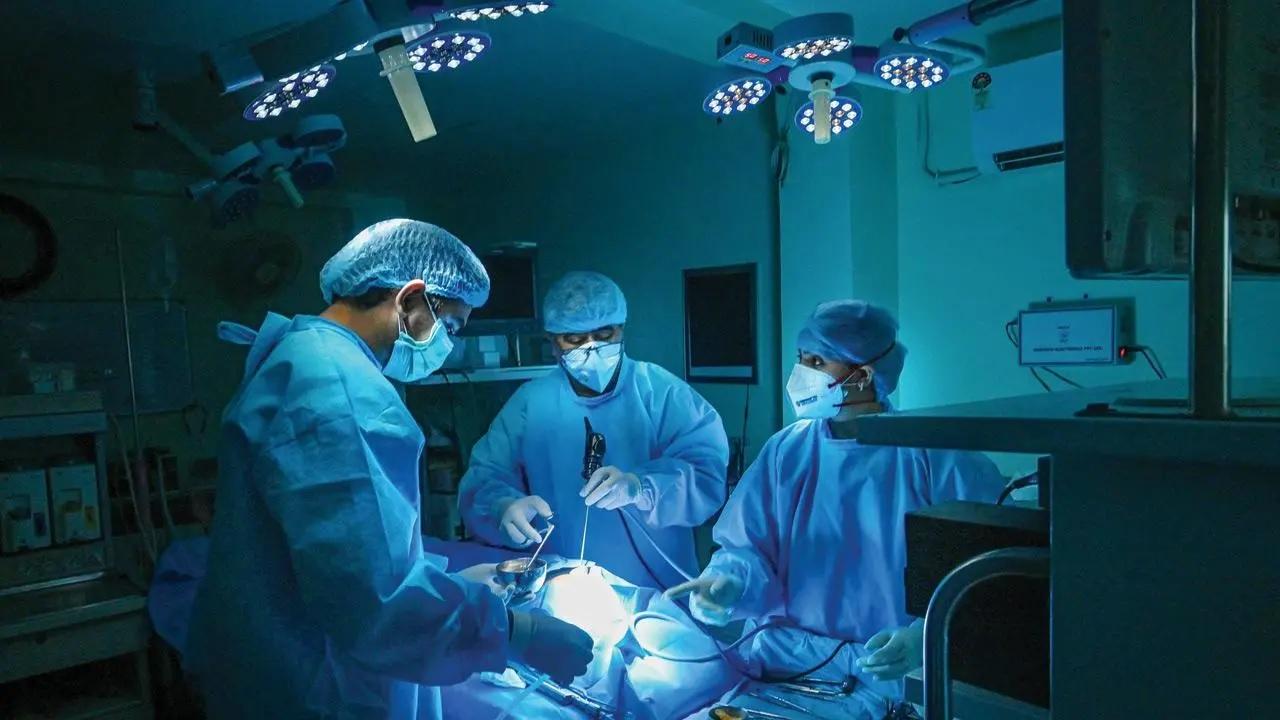Lifestyle
Surgeons Use Robotic Technology to Save Man’s Life After Accident

A team of surgeons at Medanta Super Speciality Hospital in Lucknow has successfully performed a groundbreaking procedure to save the life of a 45-year-old man with severe internal injuries sustained in a road accident. The patient fell from his motorcycle while trying to avoid cattle crossing the road, resulting in a blunt injury to his upper abdomen.
Upon arrival at the hospital, he displayed alarming signs of internal bleeding and a significant drop in hemoglobin levels. Initial scans revealed injuries near the pancreas and damage to a key vein connecting the stomach and colon. In response to these findings, the medical team opted for what they believe is India’s first robotic-assisted surgery specifically aimed at treating injuries from a road accident.
Robotic Surgery: A New Approach to Trauma Care
Dr. Sandeep Verma, Director of Gastrointestinal Surgery at Medanta, led the surgical team. He emphasized the advantages of robotic assistance, stating, “While other minimally invasive options were available, we chose the robotic route due to the multiple benefits it offers.” The precision of robotic surgery is particularly beneficial in trauma cases, where controlling bleeding is critical.
The da Vinci system, utilized during the procedure, allows for enhanced mobility and dexterity. Dr. Verma explained that “with vascular structures, even a one-millimeter deviation can result in life-threatening consequences.” The ability to make fine sutures on the injured vein was a key factor in the decision to proceed robotically rather than with traditional open methods.
Throughout the operation, the surgical team maintained readiness to switch to an open surgery approach should any complications arise. Nonetheless, the robotic procedure was completed successfully in under two hours, and the patient was discharged just four days later without complications.
A Patient’s Perspective
The patient expressed his gratitude for the advanced treatment he received, noting, “I didn’t know that such serious injuries could be treated without major cuts or stitches. I’m thankful to the entire team of doctors for helping me recover so quickly.”
Robotic-assisted surgery remains relatively rare in the field of trauma care, primarily because such cases often require immediate intervention, where open surgery is typically faster. Dr. Verma pointed out that in stable patients like this one, robotic methods can provide significant benefits, including reduced trauma to surrounding tissues, less postoperative pain, and a quicker return to normal activities.
He further noted, “Another advantage of robotics is that we can reach complex and hard-to-reach areas with better control and visibility, which supports enhanced outcomes.”
As surgical techniques evolve and technology advances, the application of robotic-assisted surgery in trauma care is gaining traction. Dr. Verma believes that cases like this one will help build a clinical foundation for the broader use of advanced robotic technologies, such as the da Vinci system, in scenarios that have traditionally relied on open surgery.
In summary, this successful operation not only highlights the potential of robotic-assisted surgery in trauma care but also sets a precedent for future applications in managing complex injuries. As the medical community continues to explore these innovative techniques, the outcomes for patients could see remarkable improvements.
-

 World5 months ago
World5 months agoSBI Announces QIP Floor Price at ₹811.05 Per Share
-

 Lifestyle5 months ago
Lifestyle5 months agoCept Unveils ₹3.1 Crore Urban Mobility Plan for Sustainable Growth
-

 Science4 months ago
Science4 months agoNew Blood Group Discovered in South Indian Woman at Rotary Centre
-

 World5 months ago
World5 months agoTorrential Rains Cause Flash Flooding in New York and New Jersey
-

 Top Stories5 months ago
Top Stories5 months agoKonkani Cultural Organisation to Host Pearl Jubilee in Abu Dhabi
-

 Sports4 months ago
Sports4 months agoBroad Advocates for Bowling Change Ahead of Final Test Against India
-

 Science5 months ago
Science5 months agoNothing Headphone 1 Review: A Bold Contender in Audio Design
-

 Top Stories5 months ago
Top Stories5 months agoAir India Crash Investigation Highlights Boeing Fuel Switch Concerns
-

 Business5 months ago
Business5 months agoIndian Stock Market Rebounds: Sensex and Nifty Rise After Four-Day Decline
-

 Sports4 months ago
Sports4 months agoCristian Totti Retires at 19: Pressure of Fame Takes Toll
-

 Politics5 months ago
Politics5 months agoAbandoned Doberman Finds New Home After Journey to Prague
-

 Top Stories5 months ago
Top Stories5 months agoPatna Bank Manager Abhishek Varun Found Dead in Well









